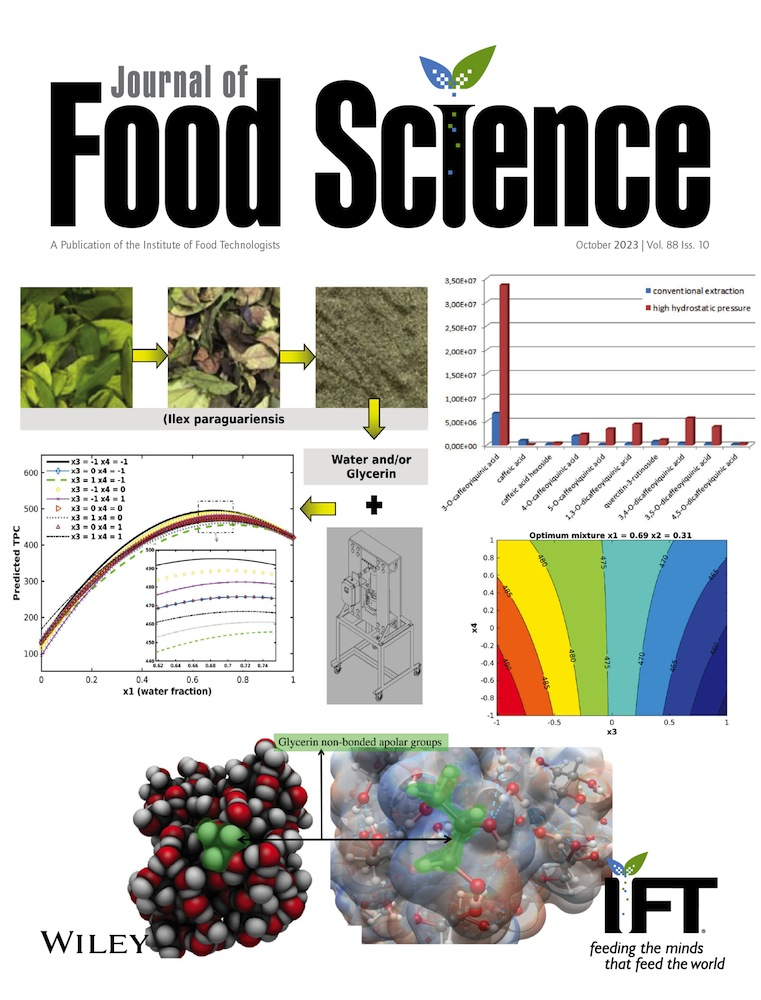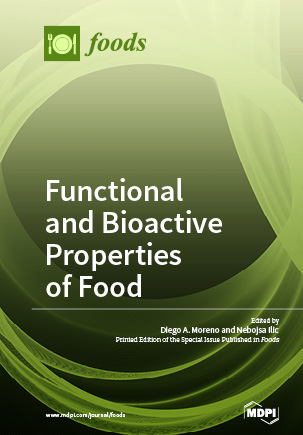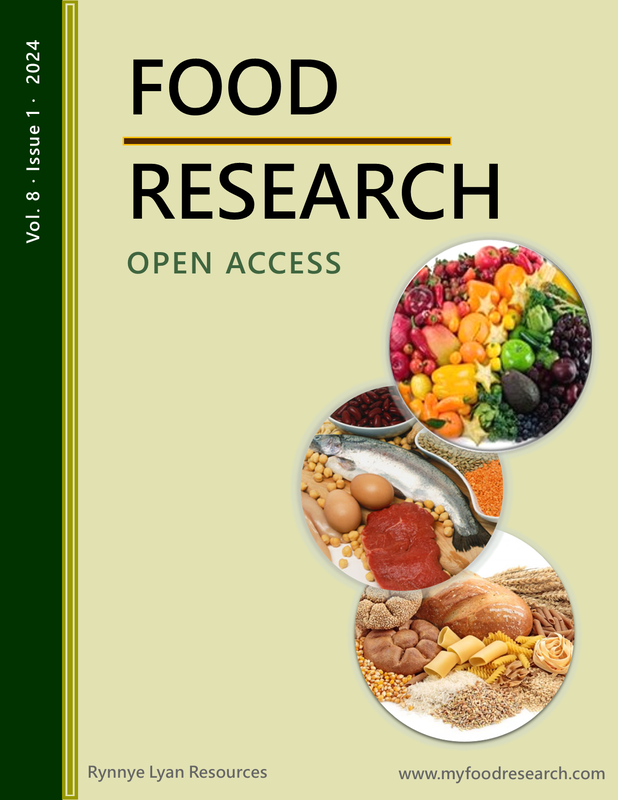Soybean »
Miso
How to submit an article:
- Registered users can submit any published journal article that has a unique DOI (Digital Object Identifier) name or link to Research Hub.
- For example, you can paste the full DOI link:
https://doi.org/10.1109/5.771073or just the DOI name:10.1109/5.771073into the field above and click submit. - The person who is first to submit a valid article to Research Hub will forever be credited for it, and every article submission earns you +6 Research Points.
Related Topics
Published research studies are articles that present the findings of original research that has undergone a peer-review process and has been made publicly available in scholarly journals, books or other media.

Evaluating estrogenic activity of isoflavones inmisousing yeast two‐hybrid method
2023 Jun 06 Journal of Food Science Higa Y, Nagano R, Kanauchi M
Genistein in miso samples, particularly in Mame miso, showed high estrogenic activity against Y187-ββ modeling hERββ. Isoflavones in miso inhibited the estrogenic activity of 17β-estradiol against Y187-αα but activated the activity against Y187-αβ and Y187-ββ, modeling hER-αβ and hER-ββ. Genistein was identified as an antagonist of estrogenic activity against hERαα but an agonist against hERαβ and hERββ.
Experimental Study
Improvement of Estrogen Deficiency Symptoms by the Intake of Long-Term Fermented Soybeans (Doenjang) Rich in Bacillus Species through Modulating Gut Microbiota in Estrogen-Deficient Rats
2023 Mar 08 Foods Zhang T, Yue Y, Jeong SJ, Ryu MS, Wu X, Yang HJ, et al.
Animal Study Experimental Study Miso MenopauseLong-term intake of traditionally made Doenjang, particularly high in certain species, may improve symptoms of estrogen deficiency more effectively than unfermented soybeans.

Natto and miso: an overview on their preparation, bioactive components and health-promoting effects
2021 Jun 30 Food Research Chan EWC, Wong SK, Kezuka M, Oshiro N, Chan HT
Review Article Vitamin K2 NattoNatto and Miso, Japanese fermented soy foods, contain health-promoting bioactive components, including nattokinase, bacillopeptidase F, vitamin K2, dipicolinic acid, γ-polyglutamic acid, isoflavones, and phenolic acids.

Protection of Fatty Liver by the Intake of Fermented Soybean Paste, Miso, and Its Pre-Fermented Mixture
2021 Feb 01 Foods Kanno R, Koshizuka T, Miyazaki N, Kobayashi T, Ishioka K, Ozaki C, et al.
Animal Study Experimental Study Miso SoybeanTraditional fermented products made from soybeans and rice, commonly consumed in the Japanese diet, show significant potential in preventing the progression of fatty liver disease.
Research insights are moderated by the Research Hub team and offer an at-a-glance overview of interesting research findings.

2023 Foods
Long-term intake of traditionally made Doenjang, particularly high in certain species, may improve symptoms of estrogen deficiency more effectively than unfermented soybeans.
Animal Study Menopause
Improvement of Estrogen Deficiency Symptoms by the Intake of Long-Term Fermented Soybeans (Doenjang) Rich in Bacillus Species through Modulating Gut Microbiota in Estrogen-Deficient Rats
Zhang T, Yue Y, Jeong SJ, Ryu MS, Wu X, Yang HJ, et al.

2021 Food Research
Natto and Miso, Japanese fermented soy foods, contain health-promoting bioactive components, including nattokinase, bacillopeptidase F, vitamin K2, dipicolinic acid, γ-polyglutamic acid, isoflavones, and phenolic acids.
Review Article Natto Vitamin K2
Natto and miso: an overview on their preparation, bioactive components and
health-promoting effects
Chan EWC, Wong SK, Kezuka M, Oshiro N, Chan HT

2021 Foods
Traditional fermented products made from soybeans and rice, commonly consumed in the Japanese diet, show significant potential in preventing the progression of fatty liver disease.
Animal Study Soybean
Protection of Fatty Liver by the Intake of Fermented Soybean Paste, Miso, and Its Pre-Fermented Mixture
Kanno R, Koshizuka T, Miyazaki N, Kobayashi T, Ishioka K, Ozaki C, et al.
Review Articles
Review articles summarise and critically evaluate the current state of research on a specific topic or field by synthesising multiple primary research studies.
Clinical Trials
Clinical trials are research studies that involve people and are conducted to evaluate the safety and efficacy of new treatments or interventions, such as drugs, medical devices, or behavioural therapies.
Study Protocols
Published study protocols are detailed plans that outline the objectives, methodology, statistical analyses, and organisation of a research study that have been made publicly available for others to review and use as a reference.
Presentation Slides

Animal Study
Long-term intake of traditionally made Doenjang, particularly high in certain species, may improve symptoms of estrogen deficiency more effectively than unfermented soybeans.
Zhang T, Yue Y, Jeong SJ, Ryu MS, Wu X, Yang HJ, Li C, Jeong DY, Park S

Review Article
Natto and Miso, Japanese fermented soy foods, contain health-promoting bioactive components, including nattokinase, bacillopeptidase F, vitamin K2, dipicolinic acid, γ-polyglutamic acid, isoflavones, and phenolic acids.
Chan EWC, Wong SK, Kezuka M, Oshiro N, Chan HT

Animal Study
Traditional fermented products made from soybeans and rice, commonly consumed in the Japanese diet, show significant potential in preventing the progression of fatty liver disease.
Kanno R, Koshizuka T, Miyazaki N, Kobayashi T, Ishioka K, Ozaki C, Chiba H, Suzutani T
Executive Summary
Write an executive summary in the form of a blog article on the topic of "Research into Chinese medicine treatment for Miso" summarising the research below and using language that can be easily understood by patients and avoiding medical jargon using a professional and caring tone of voice.
Write an executive summary in the form of a blog article on the topic of "Researched Chinese medicine treatments for Miso" summarising the research below in an objective and easy to understand way, and using language that can be easily understood by patients. Group the article into Chinese medicine treatments first, followed by nutrition and other treatments. Avoid using medical jargon and use a professional and caring tone of voice.
Write me a concise but easy to understand executive summary on the topic of "Chinese medicine treatments for Miso" based on the following research that I will give you. Your summary should be 2 paragraphs long in Australian English spelling and include references to the studies.
A Animal Study published in 2023 in the journal Foods found that Long-term intake of traditionally made Doenjang, particularly high in certain species, may improve symptoms of estrogen deficiency more effectively than unfermented soybeans. The study involved using four different types of traditionally made Doenjang (TMD), distinguished based on the quantities of certain species and biogenic amines they contained. These were used to observe possible alterations in energy, glucose, and lipid metabolism in estrogen-deficient female rats via potential modification of the gut microbiota. This involved comparing a control group of rats that underwent ovary removal with five other groups that were supplemented with different types of TMD and cooked soybeans. The outcomes revealed that weight gain and visceral fat mass were lower and lean body mass was higher in the TMD and cooked soybean intake groups compared to the control group, however, these figures were not as good as those in the normal control group. Additionally, the hepatic triglyceride content was lower with TMD intake. It was further observed that the intestinal health significantly improved in the TMD groups, and some groups revealed more improvements than others. Concerning gut microbiota, certain groups showed an increase in certain types of organisms, suggesting a benefit from high amounts of the specific species in TMD. The study inferred that TMD rich in certain species correlates positively with the regulation of estrogen-related markers.
A Review Article published in 2021 in the journal Food Research found that Natto and Miso, Japanese fermented soy foods, contain health-promoting bioactive components, including nattokinase, bacillopeptidase F, vitamin K2, dipicolinic acid, γ-polyglutamic acid, isoflavones, and phenolic acids. The process of preparing natto involves fermenting cooked soybeans with Bacillus subtilis natto. This gives the soybeans a sticky appearance, a slippery texture, a sour aroma and a nutty flavour, and results in the production of bioactive components such as nattokinase, bacillopeptidase F, vitamin K2, dipicolinic acid, and γ-polyglutamic acid. Miso, on the other hand, refers to a paste produced by fermenting cooked soybeans with koji, which is steamed rice inoculated with Aspergillus oryzae. The health benefits of these bioactive components, produced during the fermentation process of both natto and miso, have been identified and accentuated. These components add value to traditional soy foods, boosting their potential in promoting health. The wealth of bioactive nutrients in these foods indicate the reiterate the importance of traditional fermented foods in dietary practices.
A Animal Study published in 2021 in the journal Foods found that Traditional fermented products made from soybeans and rice, commonly consumed in the Japanese diet, show significant potential in preventing the progression of fatty liver disease. In the study, C57BL/6J mice were first acclimated for two weeks. Following this period, they were segregated into groups and fed on different diets for a duration of 20 weeks. These diets included a Normal Diet (ND), a High-Fat Diet (HFD), an HFD containing 5% of the fermented soybean and rice product (denoted as HFD+M), and an HFD with 5% of a pre-fermented form of the product (HFD+PFM). The focus was on assessing the impact of these diets on the development of fatty liver disease in the subjects. The mice consuming solely the high-fat diet developed the symptoms of a typical fatty liver, as anticipated. However, the mice fed with diets that included either the fermented soybean and rice product or its pre-fermented variety showed a substantial reduction in the progression of the fatty liver disease, notably in the female subjects. This was observed in terms of diminished liver weight. Moreover, a decrease was noted in the levels of leptin and resistin, hormones linked with obesity and insulin resistance, in the serum of these groups. The male subjects also showed resistance against fatty liver disease progression upon the consumption of these diets. This study therefore demonstrates the value of including such traditional fermented food products in the diet as possible deterrents against lifestyle-induced ailments like metabolic syndrome.
Moderation Tools
Topic
Sign In
Users not signed in are limited to viewing the 5 most recent items of content.